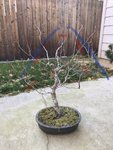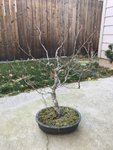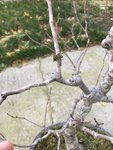Sir_Nixon
Seedling
Hello,
This is my first year as a bonsai enthusiast and the proud owner of some very cool and fun specimens. I have recently acquired a 40 year old Vine maple (Acer Circinatum) that I have some questions about the pruning and development of. The previous owner has left the branches to become quite long and I am wanting to condense the branching. With this being my first, and old, deciduous tree, I am hesitant to start trimming branches in fear of killing or ruining the tree. If I was to rough shape/trim the tree and cut some old branches, will it bud back to re-develop the branching structure?
Due to the last repotting done in 2013, I was also thinking of just repotting in the early spring and allowing the tree to gain vigor before even thinking about trimming branches in a year or so. Any thoughts? I appreciate your time in helping me. I have attached some pictures for reference.
This is my first year as a bonsai enthusiast and the proud owner of some very cool and fun specimens. I have recently acquired a 40 year old Vine maple (Acer Circinatum) that I have some questions about the pruning and development of. The previous owner has left the branches to become quite long and I am wanting to condense the branching. With this being my first, and old, deciduous tree, I am hesitant to start trimming branches in fear of killing or ruining the tree. If I was to rough shape/trim the tree and cut some old branches, will it bud back to re-develop the branching structure?
Due to the last repotting done in 2013, I was also thinking of just repotting in the early spring and allowing the tree to gain vigor before even thinking about trimming branches in a year or so. Any thoughts? I appreciate your time in helping me. I have attached some pictures for reference.





